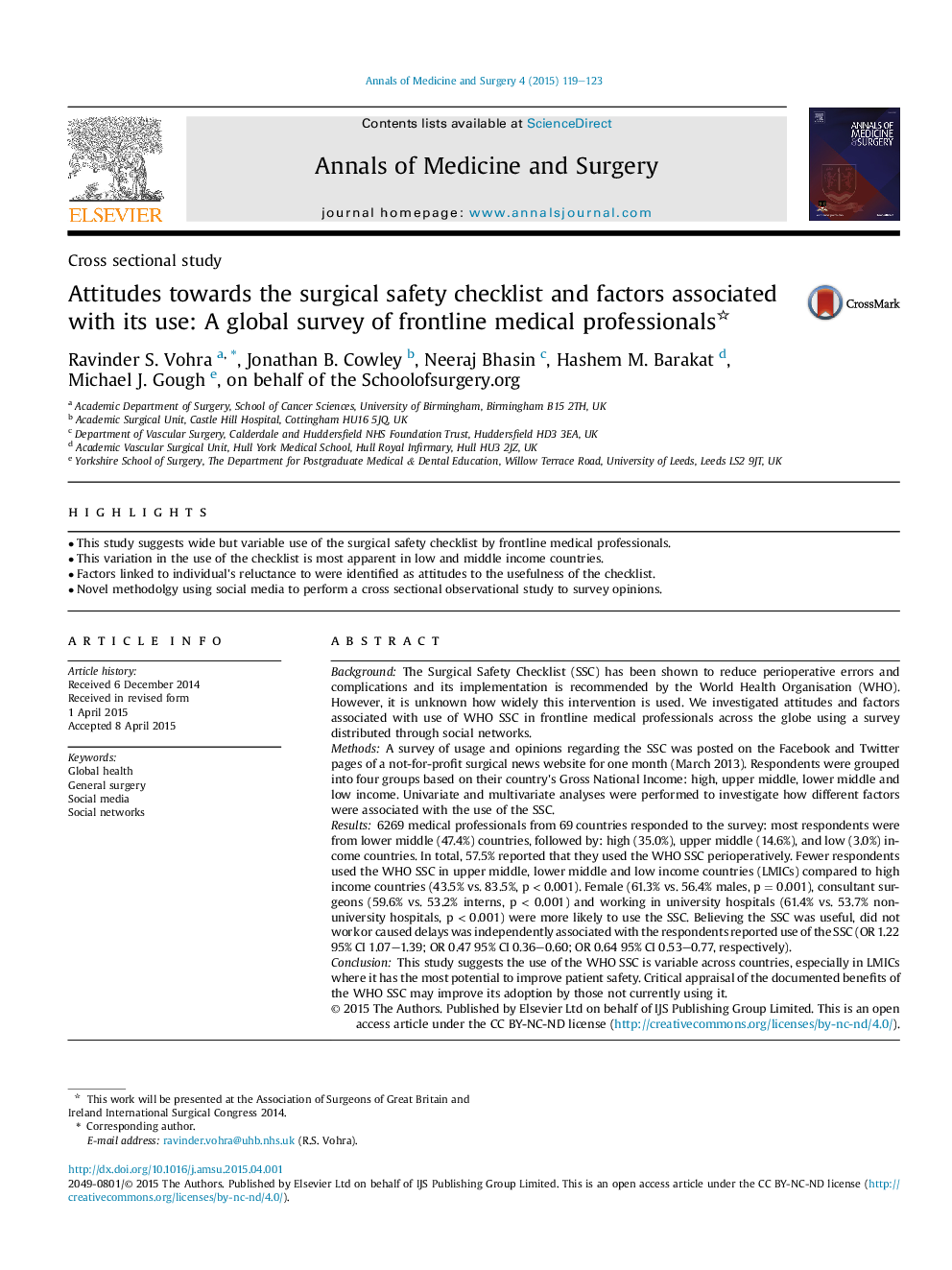| کد مقاله | کد نشریه | سال انتشار | مقاله انگلیسی | نسخه تمام متن |
|---|---|---|---|---|
| 4195359 | 1608927 | 2015 | 5 صفحه PDF | دانلود رایگان |
• This study suggests wide but variable use of the surgical safety checklist by frontline medical professionals.
• This variation in the use of the checklist is most apparent in low and middle income countries.
• Factors linked to individual's reluctance to were identified as attitudes to the usefulness of the checklist.
• Novel methodolgy using social media to perform a cross sectional observational study to survey opinions.
BackgroundThe Surgical Safety Checklist (SSC) has been shown to reduce perioperative errors and complications and its implementation is recommended by the World Health Organisation (WHO). However, it is unknown how widely this intervention is used. We investigated attitudes and factors associated with use of WHO SSC in frontline medical professionals across the globe using a survey distributed through social networks.MethodsA survey of usage and opinions regarding the SSC was posted on the Facebook and Twitter pages of a not-for-profit surgical news website for one month (March 2013). Respondents were grouped into four groups based on their country's Gross National Income: high, upper middle, lower middle and low income. Univariate and multivariate analyses were performed to investigate how different factors were associated with the use of the SSC.Results6269 medical professionals from 69 countries responded to the survey: most respondents were from lower middle (47.4%) countries, followed by: high (35.0%), upper middle (14.6%), and low (3.0%) income countries. In total, 57.5% reported that they used the WHO SSC perioperatively. Fewer respondents used the WHO SSC in upper middle, lower middle and low income countries (LMICs) compared to high income countries (43.5% vs. 83.5%, p < 0.001). Female (61.3% vs. 56.4% males, p = 0.001), consultant surgeons (59.6% vs. 53.2% interns, p < 0.001) and working in university hospitals (61.4% vs. 53.7% non-university hospitals, p < 0.001) were more likely to use the SSC. Believing the SSC was useful, did not work or caused delays was independently associated with the respondents reported use of the SSC (OR 1.22 95% CI 1.07–1.39; OR 0.47 95% CI 0.36–0.60; OR 0.64 95% CI 0.53–0.77, respectively).ConclusionThis study suggests the use of the WHO SSC is variable across countries, especially in LMICs where it has the most potential to improve patient safety. Critical appraisal of the documented benefits of the WHO SSC may improve its adoption by those not currently using it.
Journal: Annals of Medicine and Surgery - Volume 4, Issue 2, June 2015, Pages 119–123
